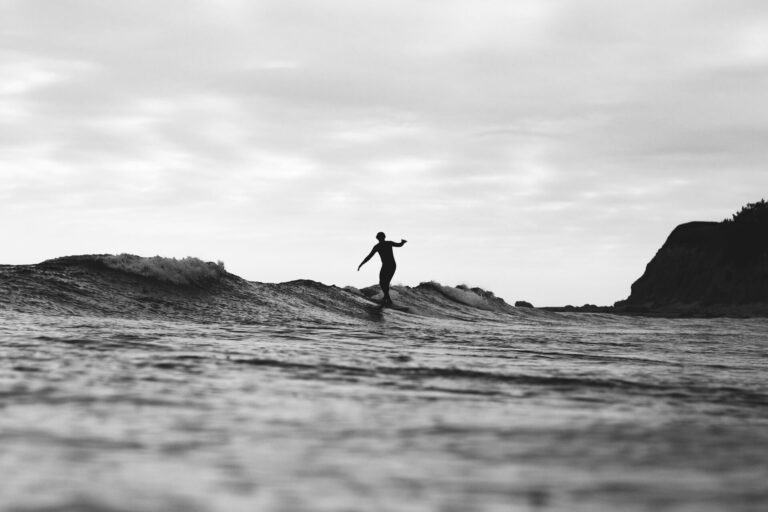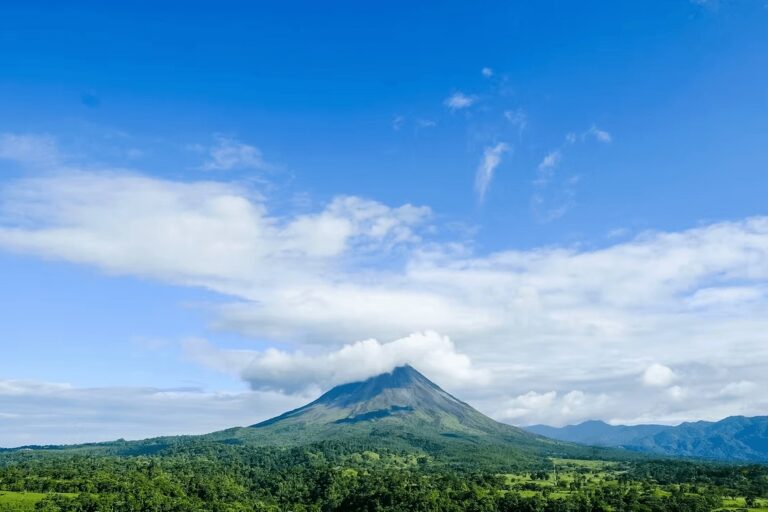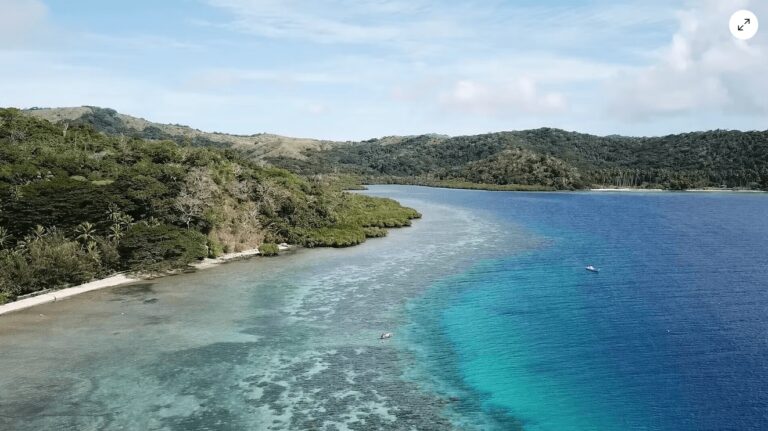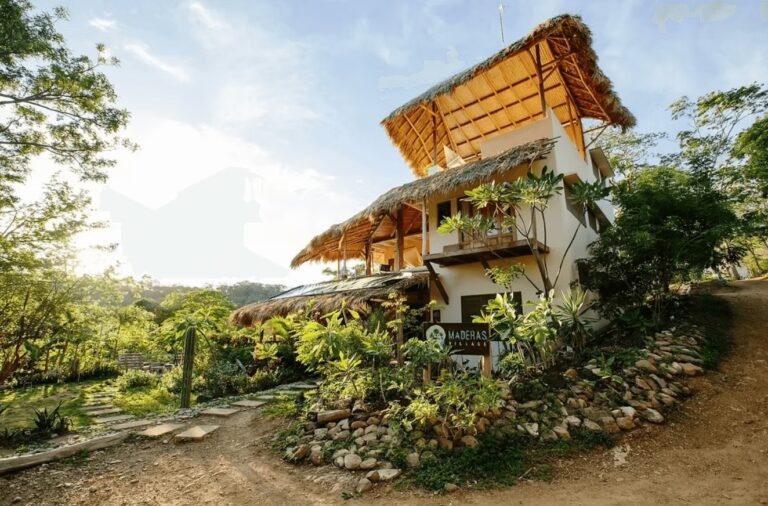Neoprene Wetsuits: Environmental Impacts + Alternatives
Are neoprene wetsuits bad for the environment? Discover why neoprene isn’t doing our environment any favours and sustainable alternatives for eco-conscious surfers.
Providing insulation and protection, wetsuits are an essential item. This is particularly true if you’re surfing and diving in cool-climate environments, like us! On most days, we don’t venture out in anything thinner than a 4mm wetsuit. In winter, it’s more like 6!
However, not many people realise the detrimental environmental impacts of neoprene, the synthetic rubber that has long been used to make wetsuits.
Recently, neoprene has been under the microscope for its environmental footprint. In response, some wetsuit manufacturers are looking towards more sustainable materials to manufacture their wares.
In this article, we’ll explain why neoprene wetsuits are bad for the environment and highlight some of the more sustainable wetsuit alternatives you can consider as an eco-friendly surfer.
Planning a cool-climate surf trip? Discover some of our favourite surf spots and places to stay in Ireland, Iceland and Norway.

This article contains affiliate links, which means when you make a purchase through that link, we earn a small commission. Affiliate links come at no cost to you and ensure our content remains free!
Why are neoprene wetsuits bad for the environment?
The production of neoprene involves the extraction and processing of petroleum-based materials. This results in carbon dioxide emissions, habitat destruction and loss of biodiversity.
Additionally, the manufacturing process often involves the use of toxic chemicals and waste products that are detrimental to the environment due to water contamination.
With multiple stages of heating and curing, neoprene production is energy-intensive and contributes significantly to greenhouse gas emissions.
Any surfer knows that their wetsuit has a finite lifespan, with most ending up in landfill after only a few seasons of use.
As neoprene is non-biodegradable, these wetsuits simply end up accumulating with the mass of synthetic materials that are already failing to decompose.
While companies like Rip Curl (in collaboration with TerraCycle) have started wetsuit recycling initiatives, the rise in sustainable materials is providing promising alternatives.

Sustainable wetsuit alternatives
From natural rubber to recycled materials, there are exciting developments taking place in the world of wetsuit design. We’ll highlight some of the most popular materials currently being used in the industry.
It’s worth noting that some eco-friendly wetsuit manufacturers use a combination of different materials to achieve performance and durability that is comparable to neoprene.
Heading off on a surf trip and want to keep your environmental footprint to a minimum? Check out our sustainable packing list for surfers.
Natural rubber
Wetsuits made from natural rubber provide an eco-friendly alternative as they are made from a source that is biodegradable and renewable. Sustainably managed rubber tree plantations can provide an ongoing source of material, without the trees being harmed during harvesting.
Compared to neoprene, natural rubber also requires less energy in its production process, making it an eco-friendly alternative for making wetsuits.
Yulex
Yulex is a plant-based material that is derived from the guayule plant (Parthenium argentatum). This perennial woody shrub is native to the Chihuahuan Desert of northern Mexico/southwest United States.
While it offers similar insulating properties to neoprene, its cultivation requires far less water, helping to reduce the material’s environmental impact. As a sustainable wetsuit choice, Yulex is becoming increasingly popular.
Recycled materials
Some wetsuit manufacturing companies are now drawing on recycled materials to create their wetsuits. This gives new life to a product that would otherwise end up in landfill.
Repurposing plastic bottles and other waste products into wetsuits can not only play an important role in diverting waste from landfills but also reduce the demand for virgin materials (such as natural rubber).
Biomaterials
One of the most exciting areas of wetsuit innovation is in the development of biomaterials that provide similar insulative properties to neoprene.
Renewable resources such as algae and fungi are being tested for their potential use in wetsuits. Without the detrimental environmental impact of neoprene, they could offer a sustainable wetsuit solution.
Limestone neoprene
While limestone neoprene has a higher carbon footprint than natural rubber, it is lauded as being warmer and more flexible. Instead of petroleum-based ingredients, it uses calcium carbonate from limestone in its manufacture.
It’s important to keep in mind that limestone is still a mined and non-renewable resource. This makes it a less sustainable wetsuit option than some of the others listed above.
Want to support marine conservation in your ocean playground? Discover 10 sustainable surf organisations to follow.

7 wetsuit brands going neoprene-free
Looking to upgrade your neoprene wetsuit with a more eco-friendly option? The following list includes brands that are working towards greater sustainability.
While most admit they aren’t yet perfect, they are all taking action to reduce their carbon and environmental footprint through sustainable material sourcing and improved production processes.
Patagonia
Patagonia has been a pioneer in creating neoprene-free wetsuits, with their first one hitting the market in 2012.
Today, their Yulex wetsuits come from FSC and Rainforest Alliance-certified sources. Meanwhile, the glue they use is eco-friendly and doesn’t contain harmful chemicals or VOCs.
Billabong
Made from 100% recycled Superflex jersey and sustainably sourced Yulex, the Furnace Natural is the most eco-friendly wetsuit that Billabong makes.
The zipperless entry reduces waste while the thermally-retentive, Graphene-infused yarns are designed to keep you toasty warm.
needessentials
needessentials produces FSC-certified Yulex and limestone neoprene wetsuits that offer a more sustainable alternative to petrochemical-based neoprene.
Each wetsuit is manufactured using 45 recycled plastic bottles and a solvent-free glue containing no harmful chemicals.
Vissla
Vissla’s eco-friendly wetsuits are crafted from Japanese limestone neoprene and recycled tyres, together with water-based glues and dope-dyed yarns that reduce energy consumption and water pollution.
The company’s fabric mills have been certified as a bluesign System Partner for their responsible use of the Earth’s resources.
XCEL
Designed in Hawaii, XCEL produces limestone neoprene wetsuits, each of which uses 45 plastic bottles in its creation.
They are manufactured with dope-dyed yarn, water-based glue and scrap tyres. Xcel’s process produces 72% fewer carbon emissions than a traditional neoprene wetsuit.
Project Blank
Designed to be high-performing and environmentally friendly, Project Blank produces a collection of wetsuits made from Yulex and recycled car tyres.
The company prides itself on being plastic-free. In fact, they have also stopped over 250,000 single-use plastic bottles from ending up in the ocean. Additionally, a tree is planted with every Project Blank order.
Seea
Made in California, Seea’s women’s wetsuits are small-batch and locally produced from Yulex.
Aside from being neoprene-free, they are working towards using recycled materials in their swimwear and diverting dead floor fabrics from landfill into new garments.
Want to avoid greenwashing during your next surf trip? Discover everything you need to know about STOKE certification and surf resorts with the tick of approval.

PLAN YOUR TRIP WITH OUR FAVOURITE RESOURCES:
Find hotels and resorts via Booking or Agoda
Book tours and experiences via Viator or GetYourGuide
Find a rental car via Discover Cars
Book flights via Kiwi or Booking
Search for buses and trains via 12Go or Omio
Get travel insurance via SafetyWing
Buy a digital eSIM with Airalo
By purchasing through our links, you’ll be supporting our website at no additional cost to you
About the authors
We are a team of passionate divers and surfers with decades of combined experience in the water and travelling to all corners of the globe. After years of chasing waves and descending into the deep blue, we’ve created this resource to highlight sustainably run surf camps, eco-friendly dive resorts and conservation-focused ocean trips to help inspire your next adventure.
Eco Ocean Escapes was born out of a love of the ocean, an obsession with travel and a concern about the impacts of our adventures on the environments we explore. Despite the benefits that surf and dive tourism can bring to local communities, we recognised that ocean-based adventures are not always managed in a sustainable manner.
Through our articles, we hope to inspire those seeking a responsible surf or dive trip that is all about supporting local communities, preserving our coastal environments and the incredible marine species that inhabit our oceans.
-
Sustainable Surf Tourism and Respecting Local Communities
Surf tourism has exploded over the last two decades. With travel becoming more accessible and social media exposing hidden spots, once-remote breaks in Indonesia, Central America, Morocco and the Pacific Islands are now iconic stops on global surf circuits. While surf travel brings income, jobs and global attention to coastal towns, it can also disrupt…
-
Inspiring Citizen Science Projects for Surfers + How to Get Involved
As surfers, we are intimately connected to the ocean – its rhythms, its wildlife and its health. Because of this relationship, many of us are looking for meaningful ways to protect the marine environments we love. One of the simplest and most impactful ways we can do this is by joining citizen science projects. These…
-
Understanding Marine Protected Areas (MPAs): Why divers should care
If you’ve spent time underwater (as a diver or snorkeller), you’ve probably noticed something: not all sites are beacons of health. Some reefs appear vibrant and full of life, while others show signs of stress – broken coral, few fish or algae-covered rocks. One of the biggest factors shaping the health of our oceans is…
-
Costa Rica: Best Marine Parks for Scuba Divers + Eco Dive Resorts
Costa Rica is a paradise for eco-conscious travellers and underwater explorers are no exception. With its healthy coral reefs, pelagic-rich waters and some of the most progressive environmental policies in the world, the country is a dream destination for those who want to dive responsibly. We’ve been lucky enough to visit Costa Rica several times…
-
Eco-Diving: Best Destinations for Sustainable Scuba Travel
As humans inspired by the underwater world, there is plenty of incentive to protect our coral reefs. Here at EcoOceanEscapes, we want to do our bit to save endangered marine species and keep our oceans free of trash. One impactful action we can all take is to choose sustainable diving destinations. These are nations (or…
-
Eco-Friendly Diving: How to Be a Sustainable Scuba Advocate
Understand the environmental impacts of diving and sustainable scuba practices in this comprehensive guide to eco-friendly diving. Any diver will tell you that being underwater is an incredible experience. It’s a world that not everyone has the opportunity to explore and the encounters we have with marine creatures can be life-changing. Watching manta rays soar…

We are a team of passionate divers and surfers with decades of combined experience in the water and travelling to all corners of the globe.
After years of chasing waves and descending into the deep blue, we’ve created this resource to highlight sustainable surf camps, eco-dive resorts and conservation-focused ocean trips to help inspire your next adventure.
Eco Ocean Escapes was born out of a love of the ocean, an obsession with travel and a concern about the impacts of our adventures on the environments we explore.












